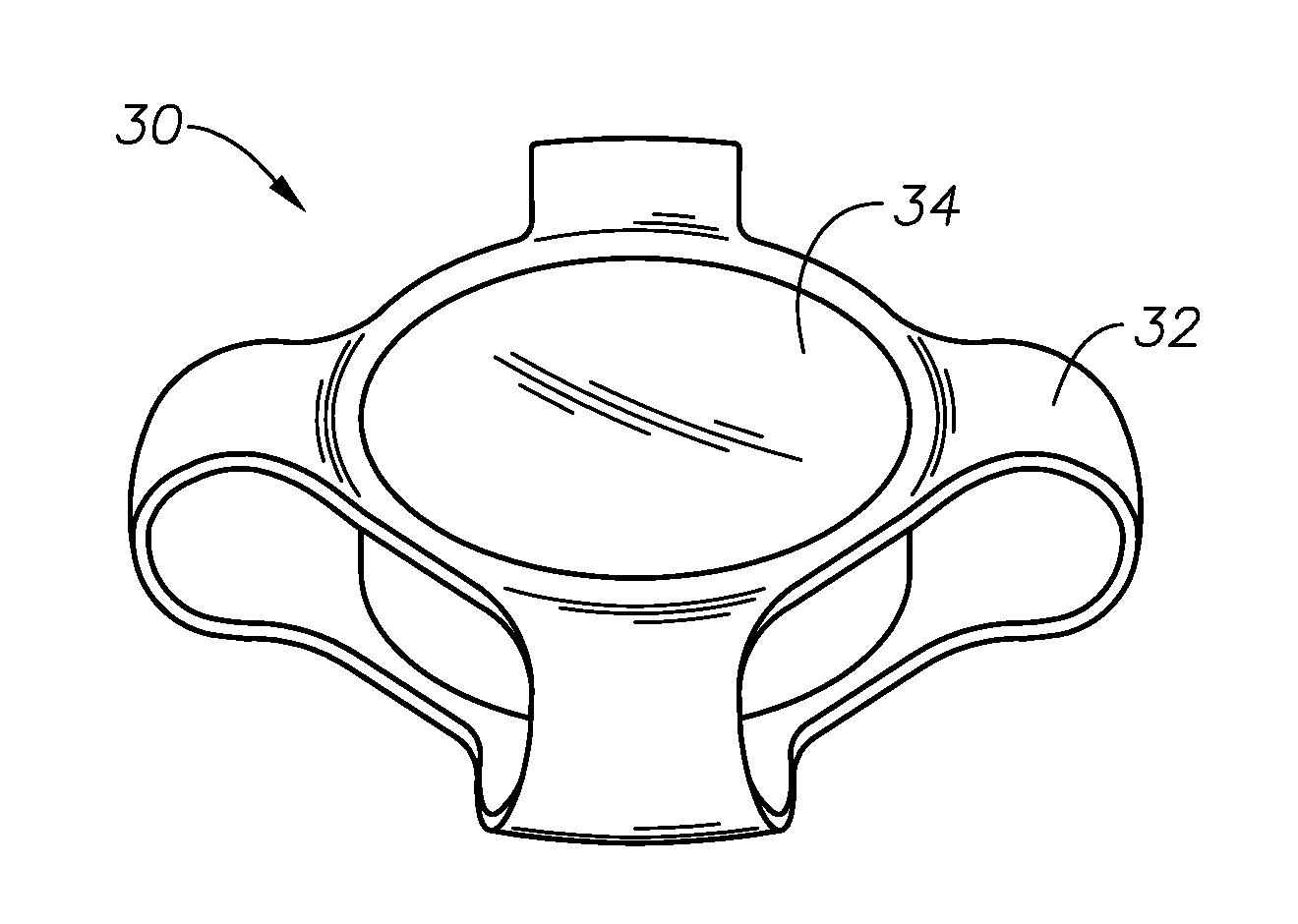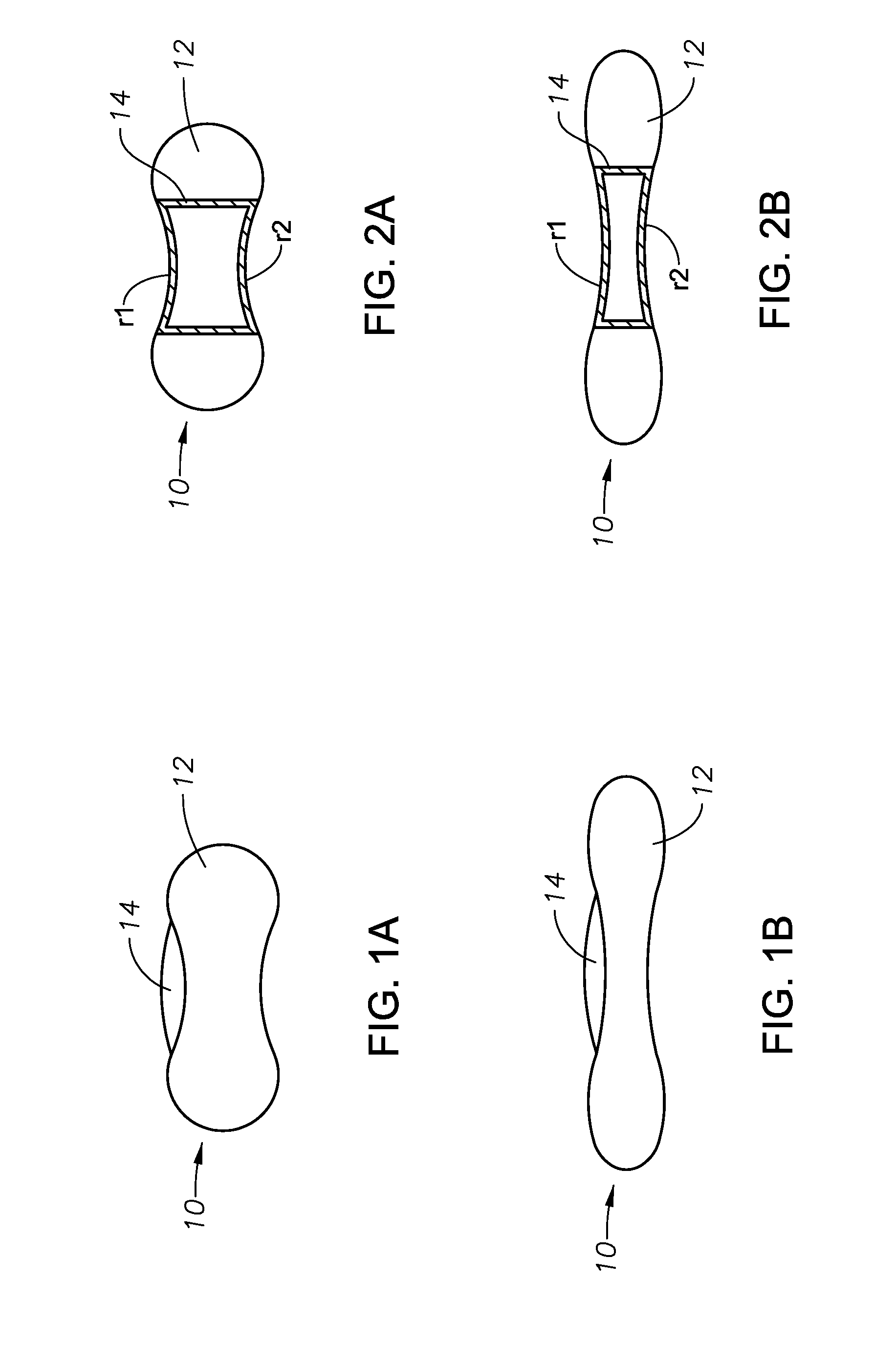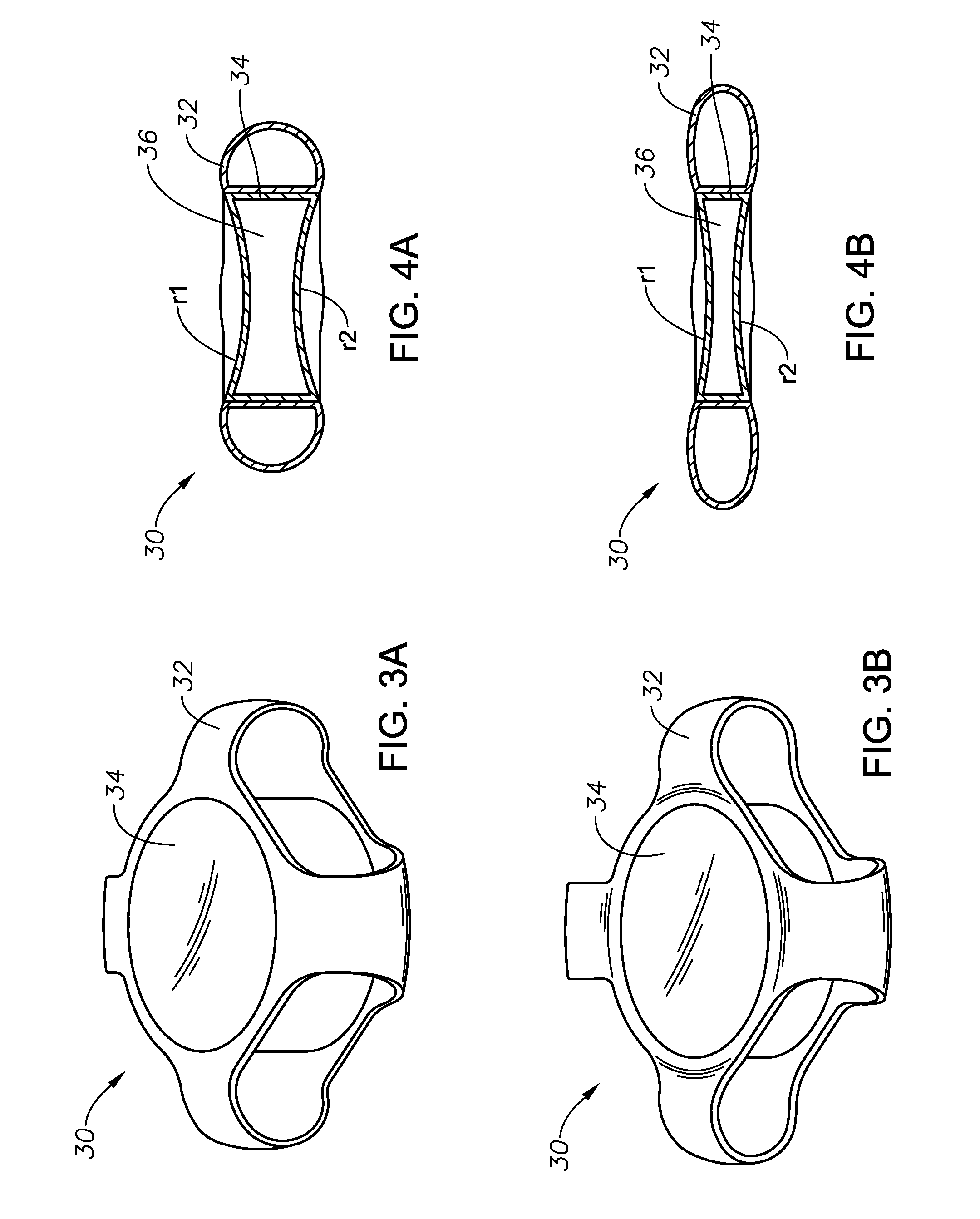Presbyopia-correcting iol using curvature change of an air chamber
a technology of air chamber and curvature change, applied in the field of iol, can solve the problems of deteriorating vision, increasing the difficulty of adjusting, and the flattening of natural lenses
- Summary
- Abstract
- Description
- Claims
- Application Information
AI Technical Summary
Benefits of technology
Problems solved by technology
Method used
Image
Examples
Embodiment Construction
[0029]Certain exemplary embodiments will now be described to provide an overall understanding of the principles of the methods and devices disclosed herein. One or more examples of these embodiments are illustrated in the accompanying drawings. Those skilled in the art will understand that the methods and devices specifically described herein and illustrated in the accompanying drawings are non-limiting exemplary embodiments and that the scope of the present invention is defined solely by the claims. The features illustrated or described in connection with one exemplary embodiment may be combined with the features of other embodiments. Such modifications and variations are intended to be included within the scope of the present invention.
[0030]In one form, the Gaussian lens equation (for variable media) can be written as follows:
ns+n″s″=n″-nr1+n″-n′r2=tc(n′-n)(n″-n′)n′r1r2
where s is the object distance from the lens, s″ is the image distance from the lens, tc is central lens thickne...
PUM
 Login to View More
Login to View More Abstract
Description
Claims
Application Information
 Login to View More
Login to View More - R&D
- Intellectual Property
- Life Sciences
- Materials
- Tech Scout
- Unparalleled Data Quality
- Higher Quality Content
- 60% Fewer Hallucinations
Browse by: Latest US Patents, China's latest patents, Technical Efficacy Thesaurus, Application Domain, Technology Topic, Popular Technical Reports.
© 2025 PatSnap. All rights reserved.Legal|Privacy policy|Modern Slavery Act Transparency Statement|Sitemap|About US| Contact US: help@patsnap.com



